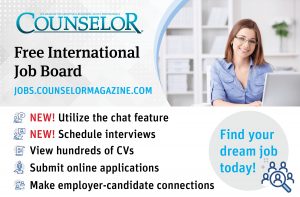Attracting Top Talent in the Addiction Field: Strategies for Employers
Share
Introduction
As an employer in the addiction-focused industry, you understand the critical role your organization plays in supporting individuals on their journey to recovery. To deliver exceptional care and services, it’s essential to attract and retain top talent. In this blog post, we’ll explore effective strategies for attracting skilled professionals who are passionate about making a difference in the addiction field.
Cultivate a Positive Organizational Culture
Creating a positive and supportive organizational culture is crucial for attracting and retaining talented individuals. Foster an environment that values collaboration, professional growth, and work-life balance. Offer opportunities for continuing education, professional development, and mentorship. When employees feel valued and supported, they are more likely to stay committed to your organization.
Clearly Define Job Expectations
Ensure that job descriptions are comprehensive, clearly outlining the responsibilities, qualifications, and desired experience for each position. Be specific about the addiction-related knowledge, skills, and certifications required. This helps potential candidates assess their fit for the role, saving time for both parties during the hiring process.
Leverage Multiple Recruitment Channels
To reach a diverse pool of candidates, utilize a variety of recruitment channels. Post job openings on specialized addiction-focused job boards, professional association websites, and social media platforms. Consider partnering with local universities, colleges, and training programs that offer addiction-related programs to tap into their talent pool. Broaden your reach to attract candidates from different backgrounds and experiences.
Emphasize Your Organization’s Mission and Impact
Demonstrate your organization’s commitment to making a positive impact in the addiction field. Clearly communicate your mission, values, and the difference you make in the lives of individuals affected by addiction. Highlight success stories and testimonials from clients and staff to showcase the transformative work your organization does. This will attract candidates who are aligned with your mission and motivated to contribute to your cause.
Offer Competitive Compensation and Benefits
Competitive compensation and benefits are essential for attracting and retaining top talent. Research industry standards and ensure that your salary packages are competitive. Consider offering additional perks such as healthcare benefits, flexible work arrangements, professional development opportunities, and employee wellness programs. These offerings demonstrate your commitment to employee well-being and make your organization more appealing to potential candidates.
Streamline the Hiring Process
A lengthy and complicated hiring process can deter qualified candidates. Streamline your hiring process to ensure efficiency and a positive candidate experience. Clearly communicate timelines, provide regular updates, and be responsive to candidates’ inquiries. Consider incorporating technology solutions such as applicant tracking systems to simplify and automate the recruitment process.
Prioritize Diversity and Inclusion
Diversity and inclusion should be integral to your organization’s hiring practices. Actively seek candidates from diverse backgrounds, including racial, ethnic, and cultural diversity. Foster an inclusive work environment where all employees feel valued, respected, and supported. Recognize the unique perspectives and contributions that a diverse workforce brings to your organization’s mission.
Conclusion
Attracting top talent in the addiction field requires a strategic approach that focuses on organizational culture, clear communication, competitive compensation, and an inclusive work environment. By implementing these strategies, you can position your organization as an attractive destination for skilled professionals who are passionate about making a difference in the lives of individuals affected by addiction. Remember, investing in your employees’ success ultimately benefits your organization and the communities you serve.
Bibliography:
- Allen, D. N., Brockman, L. N., & Mayer, A. P. (2019). The Importance of Organizational Culture and Climate in Attracting and Retaining Talent. Psychiatric Services, 70(11), 1054-1057. doi:10.1176/appi.ps.201800478
- Beer, M., & Walton, A. E. (2013). A Step-by-Step Guide to Smart Business Experiments. Harvard Business Review. Retrieved from https://hbr.org/2013/05/a-step-by-step-guide-to-smart
- Carr, J. Z., Schmidt, A. M., Ford, J. K., & DeShon, R. P. (2003). Climate Perceptions Matter: A Meta-Analytic Path Analysis Relating Molar Climate, Cognitive and Affective States, and Individual Level Work Outcomes. Journal of Applied Psychology, 88(4), 605-619. doi:10.1037/0021-9010.88.4.605
- Chalofsky, N., & Krishna, V. (2009). Meaningful Metrics: A 21st Century Performance Measurement Revolution. Performance Improvement, 48(10), 31-37. doi:10.1002/pfi.20071
- Society for Human Resource Management. (2020). Attracting and Retaining a Diverse Workforce. Retrieved from https://www.shrm.org/ResourcesAndTools/hr-topics/behavioral-competencies/global-and-cultural-effectiveness/Pages/AttractingandRetainingaDiverseWorkforce.aspx
- Stone-Romero, E. F., & Rosopa, P. J. (2008). The Relative Validity of Inferences About Mediated Relationships: Comparative Adequacy of One-Tailed and Two-Tailed Tests. Organizational Research Methods, 11(2), 326-352. doi:10.1177/1094428107300343

Pete Nielsen is the President and Chief Executive Officer for the California Consortium of Addiction Programs and Professionals (CCAPP), CCAPP Credentialing, CCAPP Education Institute and the Behavioral Health Association of Providers (BHAP), and Publisher of Counselor Magazine
CCAPP is the largest statewide consortium of addiction programs and professionals, and the only one representing all modalities of substance use disorder treatment programs. BHAP is the leading and unifying voice of addiction-focused treatment programs nationally.
Mr. Nielsen has worked in the substance use disorders field for 20 years. In addition to association management, he brings to the table experience as an interventionist, family recovery specialist, counselor, administrator, and educator, with positions including campus director, academic dean, and instructor.
Mr. Nielsen is the secretary of the International Certification and Reciprocity Consortium, and the publisher for Counselor magazine. He is a nationally known speaker and writer published in numerous industry-specific magazines. Mr. Nielsen holds a Master of Arts in counseling psychology and a Bachelor of Science in business management.






 Counselor Magazine is the official publication of the California Association of Addiction Programs and Professionals (CCAPP). Counselor offers online continuing education, article archives, subscription deals, and article submission guidelines. It has been serving the addiction field for more than thirty years.
Counselor Magazine is the official publication of the California Association of Addiction Programs and Professionals (CCAPP). Counselor offers online continuing education, article archives, subscription deals, and article submission guidelines. It has been serving the addiction field for more than thirty years.